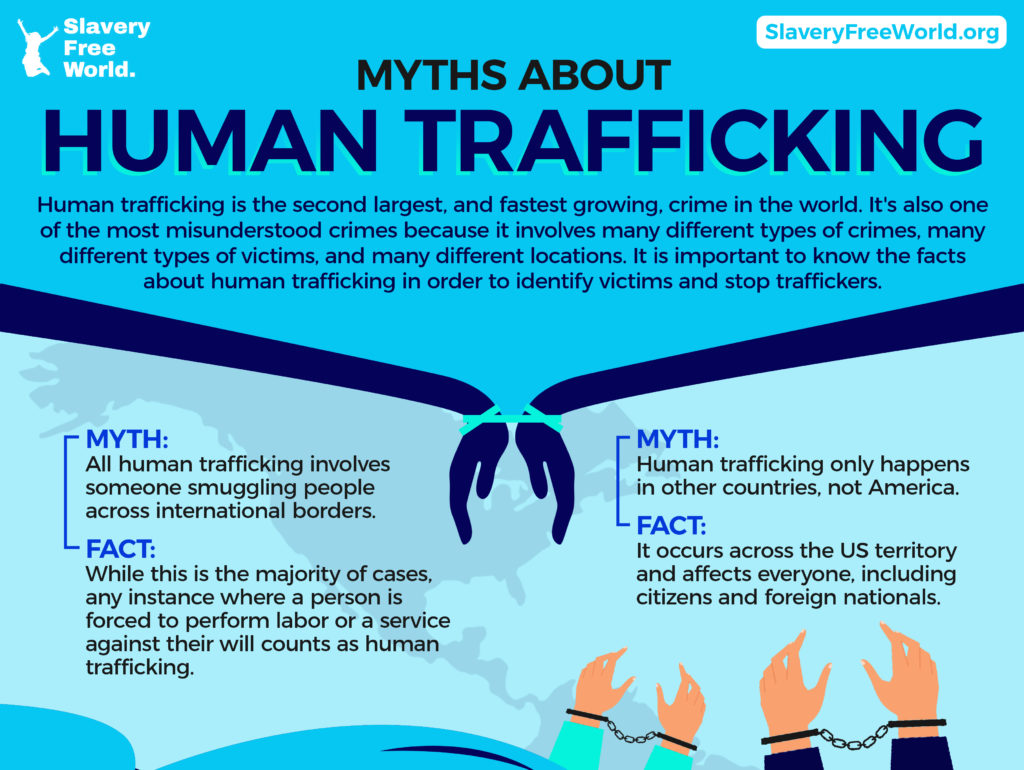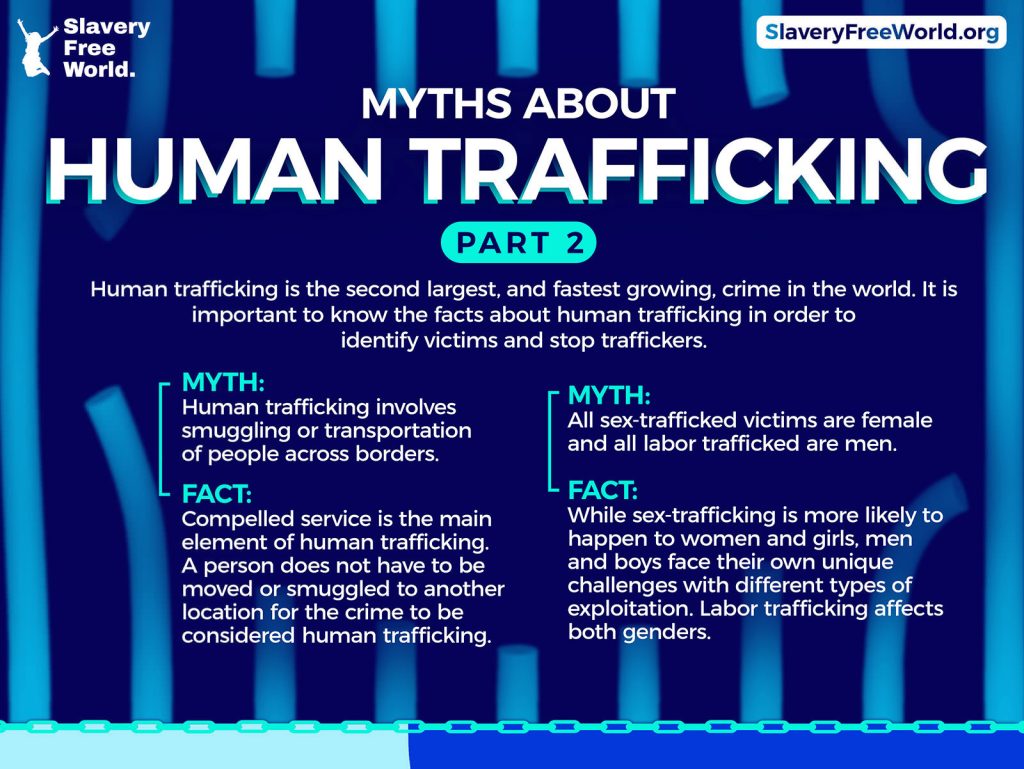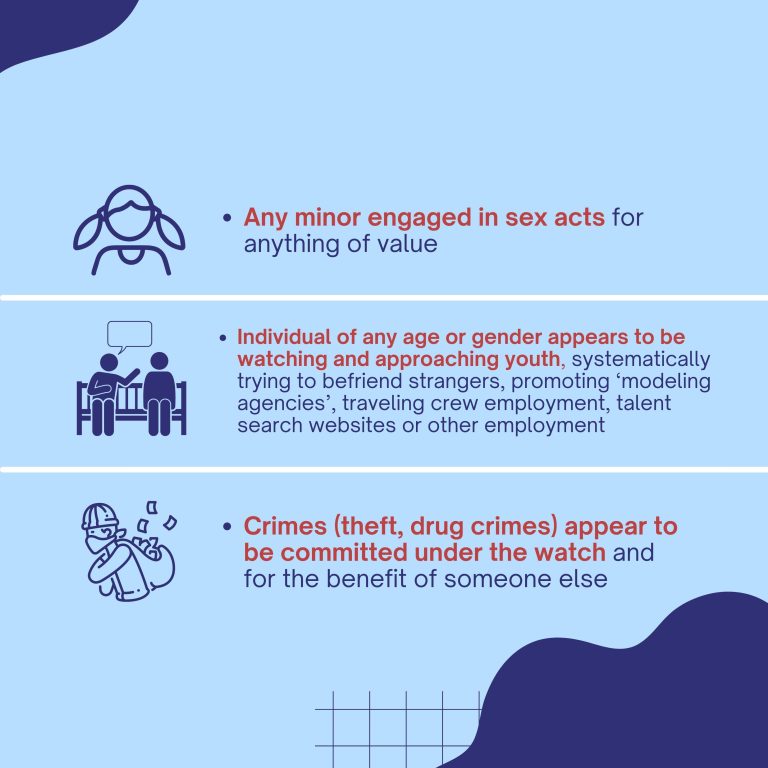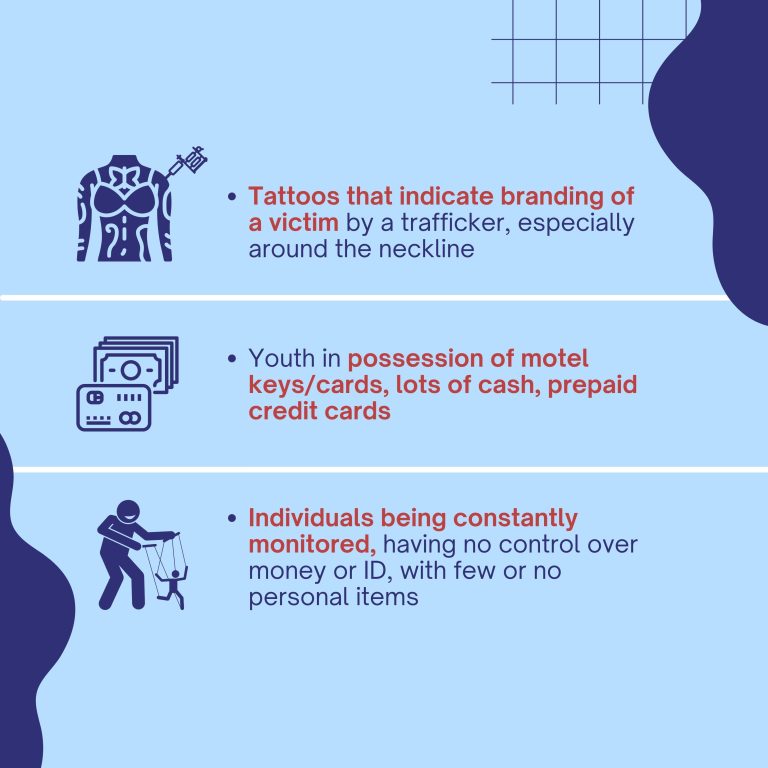The Business of Human Trafficking
Globally, an estimated 24.9 million people are subjected to human trafficking, which generates an estimated $150 billion annually in illicit profits.
-The White House, The National Action Plan To Combat Human Trafficking (2021)
Human trafficking is generally understood within the United States to mean: The recruitment, harboring, transportation, provision, obtaining, patronizing, or soliciting of a person for the purpose of a commercial sex act (sex trafficking) , in which a commercial sex act is induced by force, fraud, or coercion, or in which the person induced to perform such act has not attained 18 years of age; and the recruitment, harboring, transportation, provision, or obtaining of a person for labor or services through the use of force, fraud, or coercion for the purpose of subjection to involuntary servitude, peonage, debt bondage, or slavery.
USC Code — 22 U.S.C. § 7102 (11), (12)
Human trafficking is the second largest, and fastest growing, criminal enterprise in the world. It’s also one of the most misunderstood crimes because it involves many different types of crimes, many different types of victims, and many different locations.
Labor Trafficking
Sex Trafficking & Recruitment
National Action Plan to Combat Human Trafficking
It’s no secret that human trafficking remains a wide-spread problem, but the numbers paint a grimmer picture.
In 2020, the National Human Trafficking Hotline recorded 11,193 human trafficking cases in the United States alone. Human trafficking is an illicit multi-billion dollar global industry, racking up 150 billion dollars annually in profits but subjecting almost 25 million people to its horrors.
These numbers prompted the Biden Administration to write a National Action Plan to Combat Human Trafficking, also known as the Action Plan. This Action Plan which was written on December 3, 2021, bases its goal setting on the four foundations of global anti-trafficking efforts which are prevention, protection, prosecution and partnerships.
Creating an action plan for human trafficking was one of the calls of the meeting of the Council of Europe and the Organization for Security and Cooperation in Europe in order to centralize national responses against modern day slavery.
The U.S. Action Plan details measures that private and public institutions could make in order to combat human trafficking. There is a big emphasis on strategic planning and taking action steps in order to stop human trafficking before it has even started.
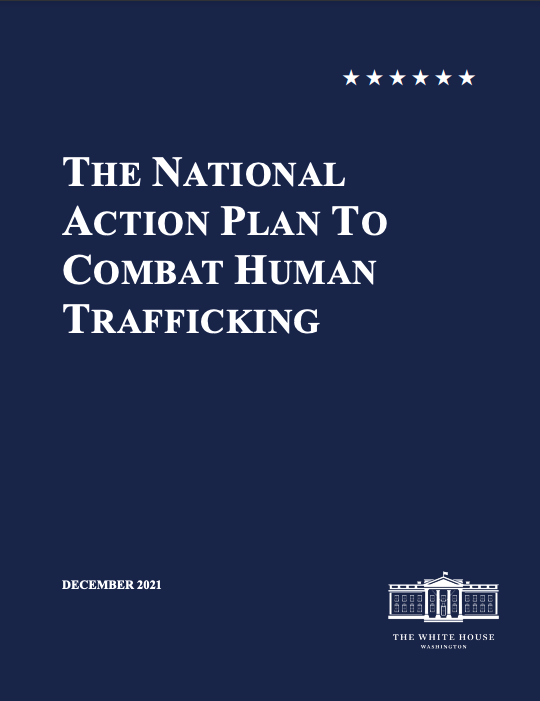
Defining Human Trafficking
Basing off of U.S. Law, Action Plan defines two types of human trafficking. The first type of which is sex trafficking. Sex trafficking basically happens when someone is coerced or forced to do a commercial sex act. It is also considered sexual exploitation if the person performing such act is a minor. The whole process—from recruitment, harboring, transportation, and solicitation of a person for sex against their free will, is considered sex trafficking.
Labor trafficking is similar to sex trafficking, but instead of a commercial sex act, victims are turned into forced laborers and are subjected to involuntary work or slavery. Like sex trafficking, a person could be prosecuted for merely recruiting someone into forced labor. Prosecution covers the whole process of labor trafficking, from recruitment to solicitation.
With COVID-19’s effect on the availability of jobs, more people, especially in economically disadvantaged sectors, are vulnerable to the threats of forced labor and sexual exploitation. Women and children, LGBTQI+, minority groups, and people with disabilities are unfortunately among the most prone to the dangers of human trafficking and also happen to be the groups that are bearing the brunt of the shortage of jobs due to the pandemic.
That is why since the private sector is essential to providing economic opportunities, it plays a key role in making sure that the Action Plan’s smart goals against human trafficking are fully implemented.
Four Pillars Make a Sturdy Foundation
The three year U.S. Action Plan bases its goals on the four pillars of anti-trafficking, namely prevention, protection, prosecution, and partnerships. When we talk about prevention, it involves providing education and awareness to vulnerable groups and controlling goods produced by forced labor to penetrate the U.S. markets.
With protection, it is about focusing on services that aid victims of human trafficking. Prosecution is holding the entities and persons responsible for human trafficking accountable through legislation and sanctions. Finally, these three pillars could come into fruition through meaningful partnerships and collaborations.
Institutional solutions to a widespread problem
The U.S. Action Plan highlights the role corporations can play in the fight against modern-day slavery. In essence, the recommended measures focus on increased security and more mindful practices.
One measure cited for financial corporations is to identify and disrupt the financial networks of organized human trafficking networks by improving anti-money laundering solutions. Furthermore, a greater emphasis on supply chain research and management is suggested to prevent products made from forced labor entering the U.S. market.
Jumping off of this, greater research and technology towards solving problems that are impeding trafficking investigation is also suggested not just for the public sector, but also for the private sector as well.
Current corporate policies, especially those that may be used to exploit immigrant employees should be reviewed and updated. It is also important for private sectors to maintain a robust communication line with public entities in charge of anti-trafficking cases to ensure that modern day slavery can be nipped in the bud.
A more mindful approach towards this problem, not just by government institutions, but also from corporations and other private entities could really go a long way in curbing and eventually eliminating human trafficking.
Sources:
Mendelshon, A. (2022). The National Action Plan to Combat Human Trafficking: What the Private Sector Should Know and Do. Accenture Financial Services Blog. Retrieved from https://accenture.com
National Human Trafficking Hotline. (2020). 2020 National Hotline Annual Report. National Human Trafficking Hotline. Retrieved from https://humantraffickinghotline.org
The White House. (2021). National Action Plan to Combat Human Trafficking. Washington DC: The White House.

